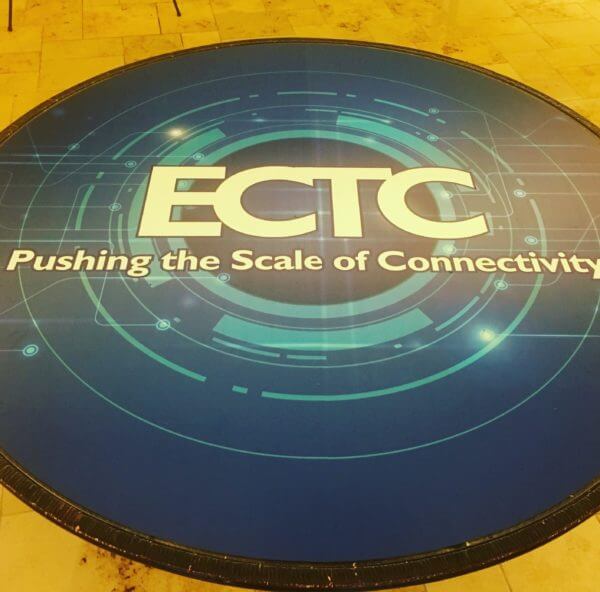
Festivities at ECTC 2018 kicked off May 29, 2018, with a full-day Heterogeneous Integration Roadmap (HIR) Workshop. This workshop was a continuation of an ongoing series that have been scheduled alongside major conferences around the globe so that as many people as possible can participate. We’ve been following the progress since the beginning. I caught up with Bill Chen, president of the IEEE Electronics Packaging Society (EPS) and chairman of the HIR committee, to learn more about HIR activities, and what it means for our industry going forward.
HIR Nuts and Bolts
The HIR reflects the collaborative efforts of five industry organizations: IEEE Electronics Packaging Society (EPS), SEMI, IEEE Electron Devices Society (EDS), IEEE Photonics Society and the ASME EPPD Division.
The committee comprises representatives from each organization, is chaired by Chen and includes:
- Bill Bottoms (IEEE EPS)
- Tom Salmon (SEMI)
- Subramanian Iyer (IEEE EDS)
- Amr Helmy (IEEE Photonics Society)
- Ravi Mahajan (ASME EPPD Division).
There is also a global advisory council that provides oversight for the committee. The council currently includes:
- Ajit Manocha – President and CEO of SEMI
- Nicky Lu – Founder and Chairman of Etron Technology in Taiwan
- Babak Sabi – Intel Corporation
- Hubert Lakner – Board of Directors Chairman, Fraunhofer Microelectronics Group
Chen explained that the HIR organization is designed to continue on without losing momentum as committee members move on to other positions. Its governance is also company agnostic.
Why the HIR is Important
Unlike its predecessor, the ITRS roadmap, which was process focused driven entirely by Moore’s law, the HIR recognizes that Moore’s law continues, but has evolved, explained Mahajan. HI is a complementary way of doing system and subsystem optimization.
So how do you create a coherent picture when you want to integrate heterogeneous components across multiple application spaces? This question drove the structuring of the roadmap itself.
The 22 working groups, therefore, were strategically organized according to the following categories: HI for market applications, HI components, design, cross-cutting topics, and integration processes. Chen explained this approach acknowledges that while focus groups are needed, in the end, everything is interconnected.
As an example of how the HIR will be used to identify and circumvent existing barriers to system integration, Chen pointed out the working group focused on co-design, which did not exist in the ITRS Roadmap. He said co-design and simulation tools that apply to all spaces are critical to system integration. While there are tools are available, they aren’t complete.
We got a sneak peek of some of the HIR roadmap work being done by the 2D-3D Working Group regarding industry nomenclature in March at the IMAPS Device Packaging Conference. There is a push to retire 2.5D and interposer verbiage from the HI lexicon and replace it with 2D and 3D; with 2D further clarified as 2DS (on silicon substrates) and 2DO (for organic substrates). The goal, explained Chen, is to create a nomenclature that is not based on company names but is standard and generic. He acknowledged, however, that industry-wide adoption isn’t guaranteed.
“We’re not going to try and change what people use. We will put the framework on the table that makes sense, is accurate and technically rational,” he said. “It will be up to the industry to decide.”
The same rationale applies to the rest of the roadmap. “Technology is going to develop, and we will make things clearer and more understood,” explained Chen. Essentially, the HIR is best described as a guidebook for research and development that will be used by research institutes to educate students. It’s a projection that will be continuously refined over time using the best judgment and represents the consistent vision of knowledgeable people in the industry.
While originally targeted for publication at ECTC, Chen said we can realistically expect the HIR Roadmap to be available in early to mid-September. This effort is being driven by an army of volunteers, and many working groups are at different stages of completion. But an editor has been engaged, and the groups are on target to meet the first manuscript deadline of August 16. At this writing, we’re looking at September 16, 2018, for release.
Plans are currently underway to hold the next HIR Roadmap Workshop during SEMICON West, which takes place July 10-12, 2018 in San Francisco. All are invited to participate in helping to shape the future of the industry.
For more on HIR activities, check out this interview with Eton’s Nicky Lu, by EE Times Junko Yoshida. ~ FvT




![[err-ad-fallback-title]](http://www.3dincites.com/wp-content/plugins/a3-lazy-load/assets/images/lazy_placeholder.gif)














